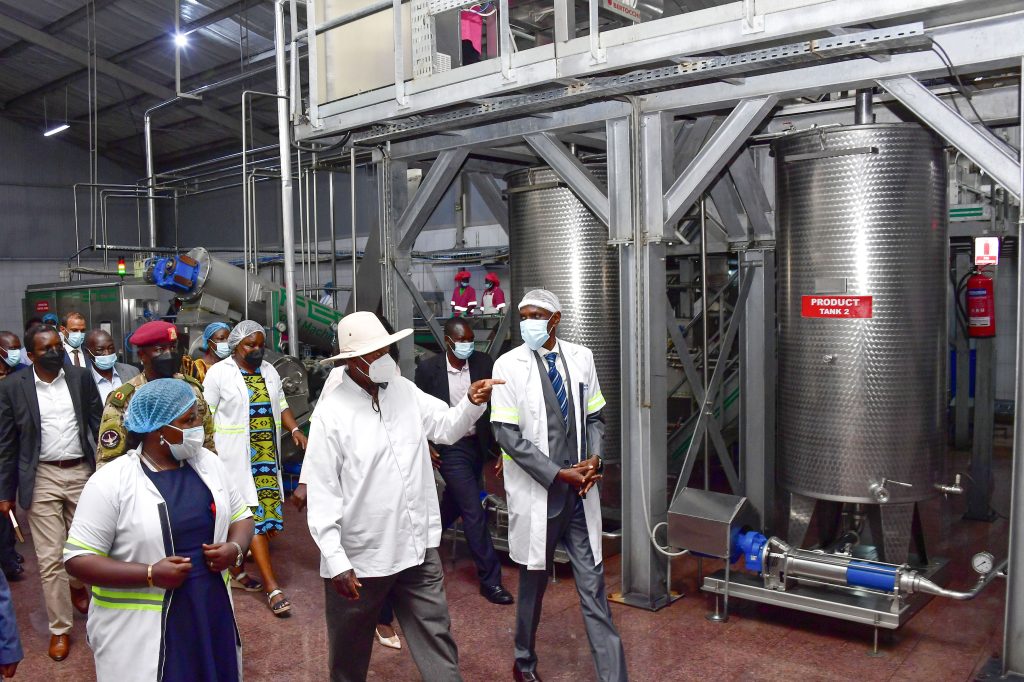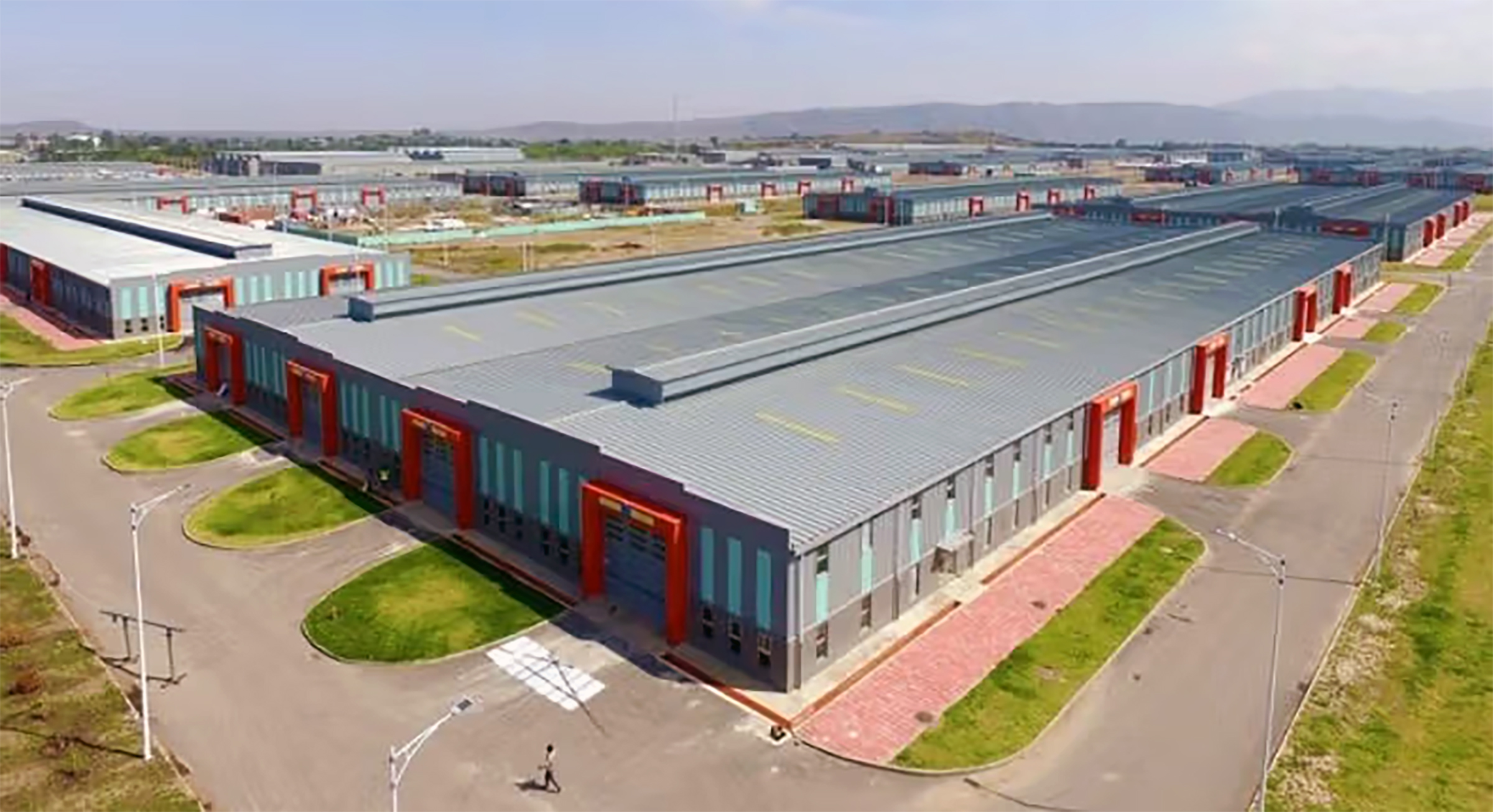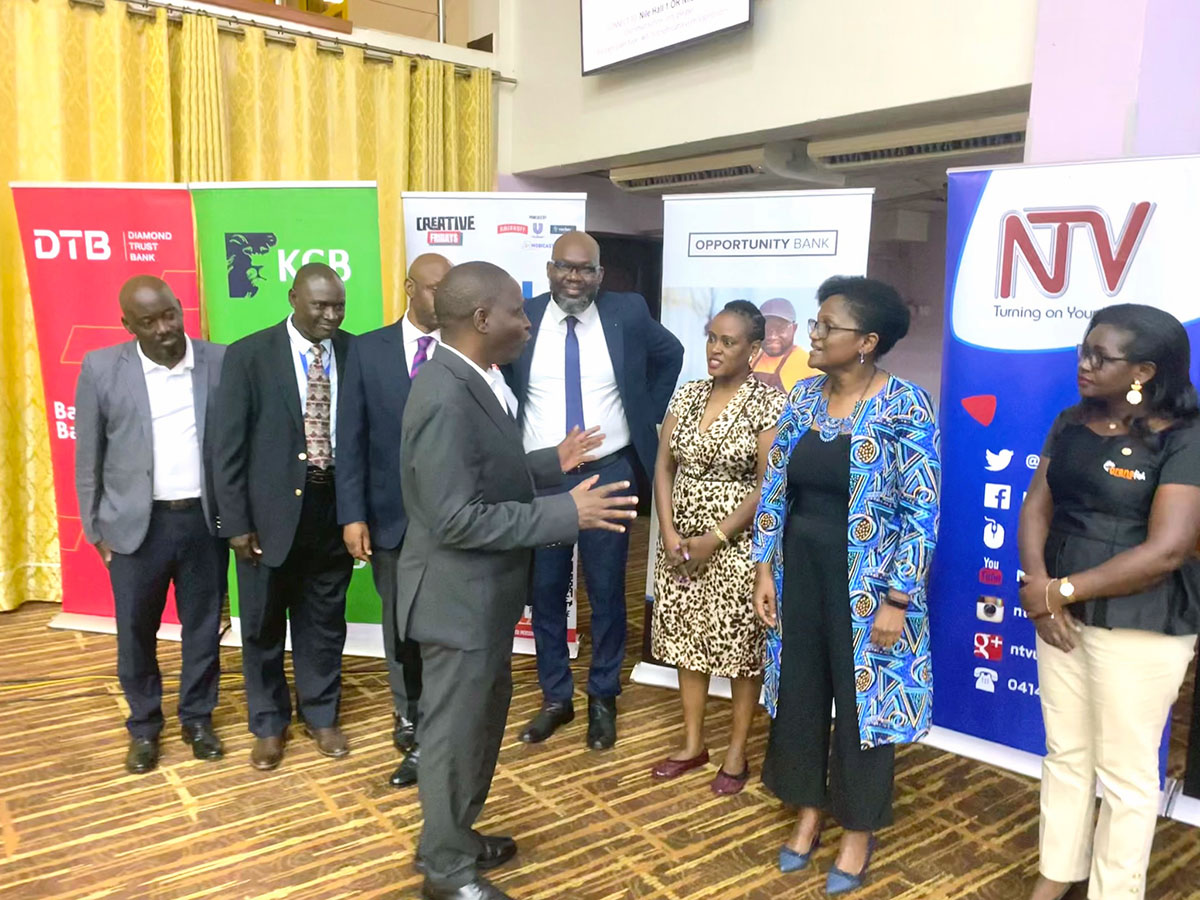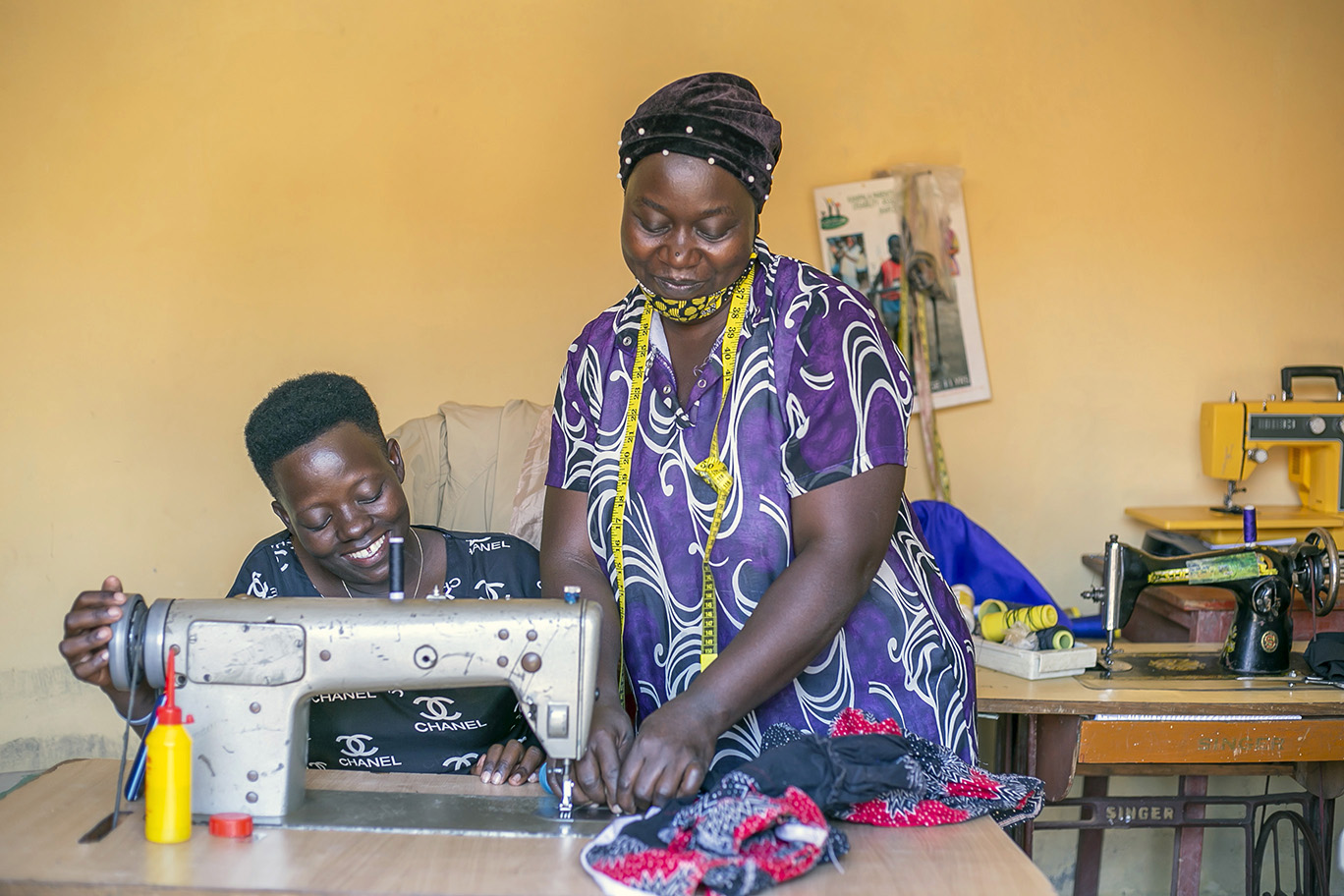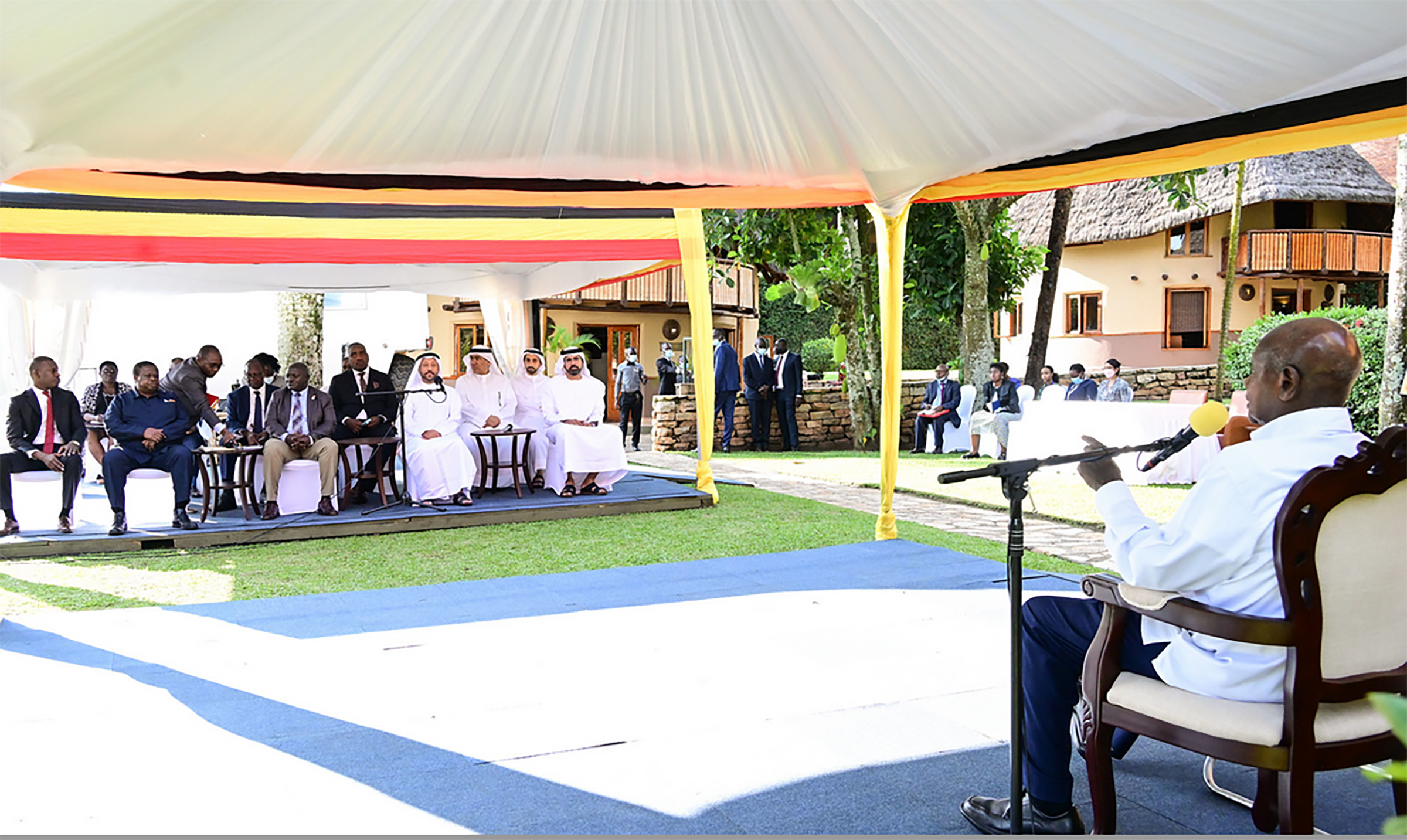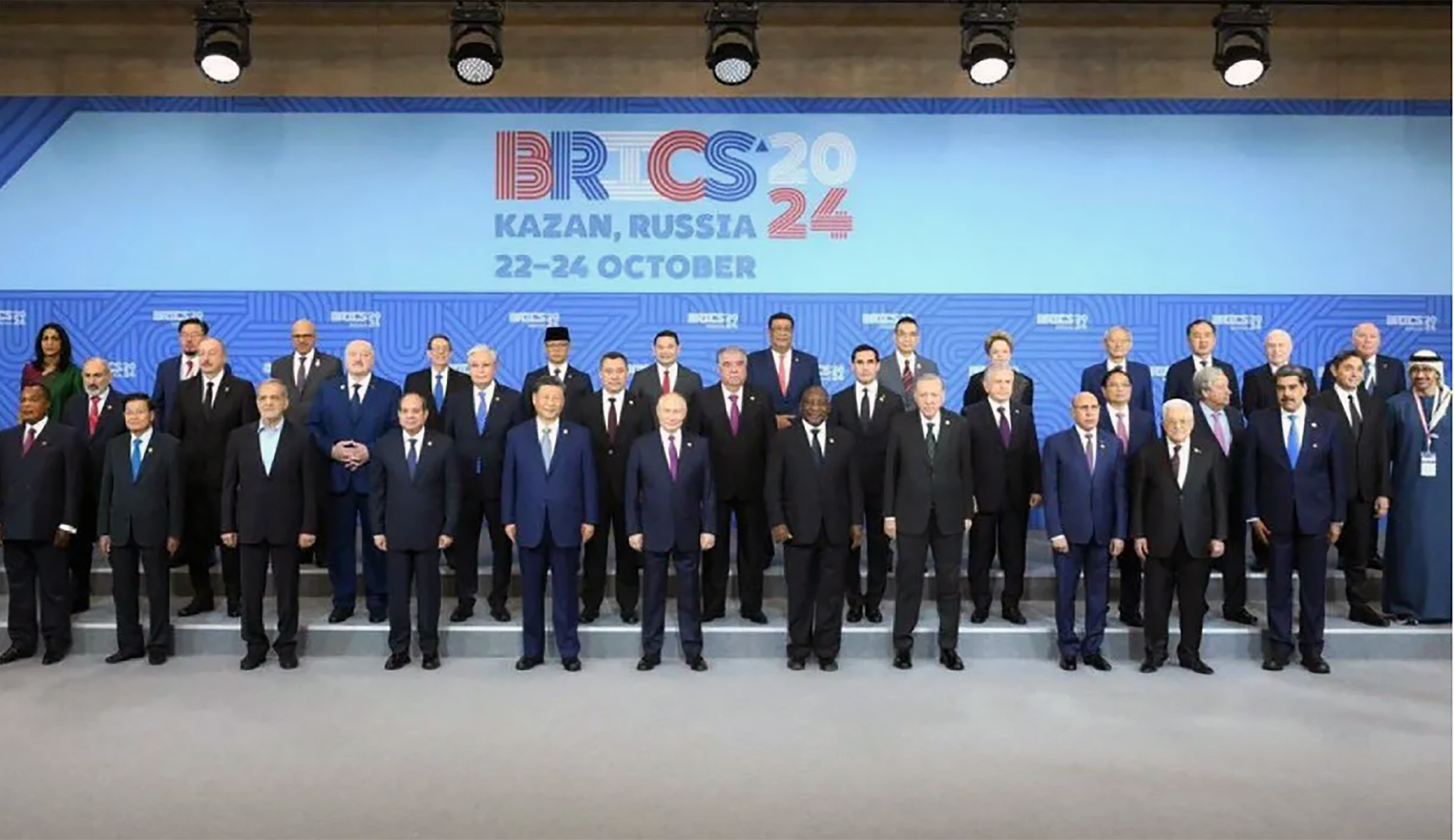Rethink industrial financing model, Bahati tells banks

President Yoweri Museveni watches as a worker operates a packaging machine at the official launch of the Royal Milk factory in Kampala recently. Financing bottlenecks are a major challenge for the country's industrialisation agenda. FILE PHOTO
The Minister of State for Industry, David Bahati, has made a passionate appeal to Uganda’s financial sector to urgently reform its lending practices, cautioning that the current system, marked by exorbitant interest rates, inflexible loan conditions, and prolonged bureaucratic processes, is undermining industrial growth and threatening the country’s broader economic transformation agenda.
Speaking at the Second Annual Uganda Manufacturers Association (UMA) Financial Symposium and Exhibition held in Kampala, Bahati emphasized that access to affordable, timely, and flexible financing remains one of the biggest barriers to unlocking Uganda’s industrial potential.
“Interest rates between 17% and 23%, combined with short loan tenures and lengthy approval procedures, are simply unsustainable. Manufacturers walk into banking halls and wait weeks for a decision. That level of delay is unacceptable—they need answers within days,” Bahati stated.
- He urged financial institutions to rethink their approach to credit assessment by moving beyond rigid, collateral-based lending models. Bahati also called for a paradigm shift towards evaluating entrepreneurs based on their vision, capacity for innovation, and long-term growth potential, factors he described as more reflective of a dynamic, modern economy.
He acknowledged the persistent concerns raised by Uganda’s manufacturing community, particularly around the high cost of credit and limited access to long-term financing, and assured stakeholders that their voices have not gone unheard.
The Uganda Manufacturers’ Association (UMA) Financial Symposium is a flagship annual event that brings together key stakeholders across industry and finance to address the pressing financial needs of Uganda’s manufacturing sector. The symposium serves as a strategic platform for engagement, innovation, and actionable dialogue between manufacturers, financial institutions, policymakers, and development partners.
- Reaffirming government’s commitment to creating a more supportive financial environment, the Minister pledged that actionable recommendations emerging from the symposium would once again be tabled before Cabinet for consideration and follow-through. He pointed to concrete steps the government is already taking to ease the financing burden on industrial players. “These include the ongoing capitalization of the Uganda Development Bank (UDB), which now offers sector-targeted loans at interest rates as low as 8%, a substantial departure from prevailing commercial rates,” he said.
 Minister of State for Industry, David Bahati, makes his speech at the financial symposium in Kampala.
Minister of State for Industry, David Bahati, makes his speech at the financial symposium in Kampala. DTB Uganda CEO Godfrey Ssebaana expects urgent reforms in Uganda's industrial financing systems.
DTB Uganda CEO Godfrey Ssebaana expects urgent reforms in Uganda's industrial financing systems.He cited efforts to strengthen institutions like the Uganda Development Bank (UDB), now offering loans at rates as low as 8%, and government-backed financing schemes such as the $217 million GROW Project supported by the World Bank. The Minister also referenced subsidized lending models where borrowers repay only the principal, with interest costs covered by government.
Diamond Trust Bank (DTB) Uganda Chief Executive Officer, Godfrey Ssebaana, joined the chorus for urgent financial sector reform, describing Uganda’s current industrial financing ecosystem as outdated and ill-suited for the demands of a modern, fast-growing economy.
“Manufacturing is the backbone of national transformation, and so, it is the engine of job creation, value addition, and export competitiveness. But without a robust and responsive financial architecture, Uganda cannot unlock the full potential of its industrial base,” he stated.
Ssebaana warned that the structural deficiencies in Uganda’s financial system, including the chronic shortage of affordable, long-term capital and a lack of sector-specific financial products, continue to hinder the growth of local manufacturers, especially small and medium-sized enterprises (SMEs) that make up the bulk of the industrial ecosystem.
- He stressed that if Uganda is to transition from a raw-materials-based economy to one driven by productivity, innovation, and resilience, it must undertake bold, systemic reforms that realign industrial financing with the country’s long-term development aspirations.
- Ssebaana outlined three critical strategic pillars that he believes must underpin the transformation of Uganda’s industrial financing. These he said include blended finance and patient capital, green finance, and fintech-enabled solutions.
He advocated for the adoption of hybrid financing models that combine concessional public funds with private sector investment to de-risk high-impact projects, particularly in agro-processing, light engineering, and other productive sectors that are essential for sustainable industrialization.
“We must create financial instruments that recognize both risk and long-term value. Blended finance and patient capital allow us to support projects that may not yield immediate returns but have profound socio-economic impact over time,” Ssebaana noted.
In addition to broad strategic reforms, Ssebaana proposed a series of targeted interventions aimed at unlocking financing for Uganda’s manufacturing sector such as fiscal incentives to drive industrial sustainability, including tax breaks for manufacturers investing in energy-efficient technologies and green infrastructure. Such incentives, he argued, would not only lower production costs but also accelerate the country’s transition to an environmentally resilient economy.



.jpg)

